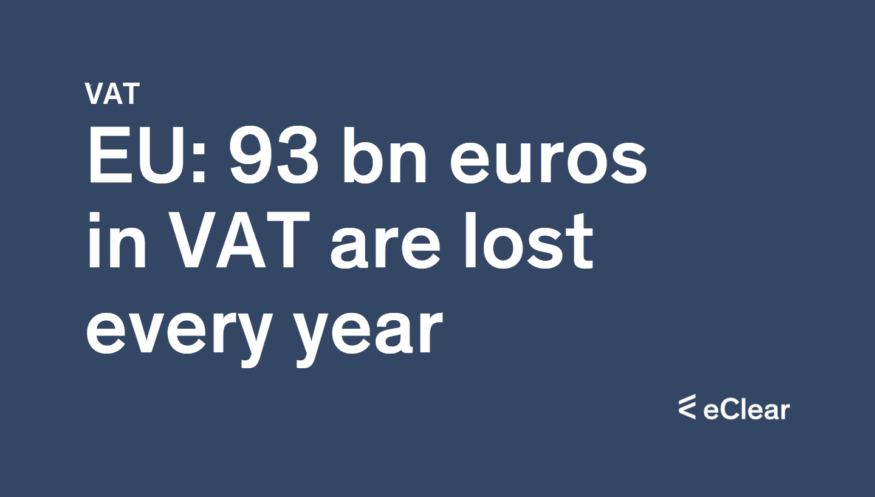According to recent estimates by the European Commission, EU member states are missing out on an estimated €93 billion in VAT revenue each year. A detailed announcement will be published in early December 2022.
VAT gap shows the difference between tax forecasts and actual revenues. VAT shortfalls are predominantly due to the following:
- Company liquidations, which is why no VAT was paid
- Cumbersome and inefficient work of the tax administration offices
- Legitimate optimisation of the sales tax structure
- Fraud
Although improvements are beginning to emerge, the European Commission urges the pace be stepped up. Otherwise, it would take up to 13 years to close the VAT gap. In last year’s report, the European Commission still explicitly warned of a high economic loss – a consequence of the economic impact of COVID-19.
In 2022, the European Commission launched TAXud, a VAT Gap Initiative, to exchange ideas between European tax administrations. Another measure to help close the gap.
ViDA proposals on e-invoicing and digital reporting – further measures to close the gap
On 7 December, the EU Commission’s proposals on “VAT in the digital age” are expected. The new regulation imposes additional information and due diligence obligations on operators of digital platforms in particular.
Chronology of the EU VAT reforms
| 2025 | Thresholds for standardisation of VAT registration |
| 2024 | Reporting and accounting obligations of payment providers for seller transactions |
| Digital reporting obligations, including EU harmonisation of e-invoicing Implementation of “VAT in the Digital Age” | |
| 2023 | DAC-7 – Harmonisation of reporting for digital marketplaces |
| Reform proposals on VAT exemption for financial services Consultation closed | |
| Tour operator margin scheme VAT reforms EC undertakes new review | |
| 2022 | IOSS reforms to avoid double taxation; proposals early 2022 |
| EU freedom for reduced VAT rates: In force since 6 April 2022 | |
| Proposals on “VAT in the digital age”; publication planned for 7 December 2022 | |
| Uniform VAT registration in the EU – extension of OSS; publication planned for 7 December 2022 | |
| Proposal for the VAT treatment of the platform economy; publication expected on 7 December 2022 | |
| EU-DAC-8 proposals on taxation of cryptocurrencies; publication planned for 7 December 2022 | |
| VAT Gap Initiative Q3 2022 | |
| Final EU VAT system put on hold | |
| 2021 | One-Stop-Shop (OSS) uniform EU VAT return; In force since 1 July 2021 |
| Abolition of the €22 import VAT exemption, new IOSS declaration; In force since 1 July 2021 | |
| “Marketplace deemed supplier” EU VAT reforms; In force since 1 July 2021 | |
| 2020 | Quick Fixes for VAT; In force |
| Cooperation between tax authorities in the fight against VAT fraud; In force | |
| Tax Action Plan 25 – Roadmap for VAT and other tax reforms, See “VAT in the digital age” and others | |
| 2019 | Simplification of electronic services, VAT compliance and thresholds; In force |
| Single-use and multiple-use vouchers; In force | |
| 2018 | Lower VAT rates for e-books and publications, In force, although not all EU states have adopted this option |
| EU general reverse-charge mechanism, in force, although no country has adopted this voluntary option | |
| 2015 | VAT reform for electronic B2C services – MOSS declaration; In force |







